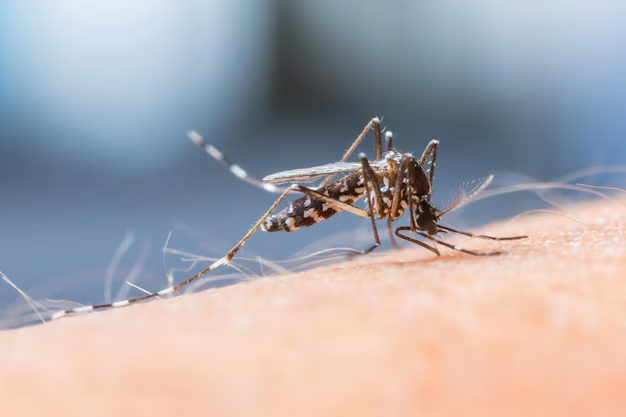Understanding Malaria Transmission: What You Need to Know
Malaria, a disease that has plagued humanity for centuries, remains a significant global health concern. Despite numerous efforts to eradicate it, malaria continues to thrive, particularly in tropical and subtropical regions. Understanding how malaria is transmitted is crucial for effective prevention and control. Let's delve into the intricacies of malaria transmission, explore the journey of the causative agent, and examine related subtopics that provide a deeper understanding of the disease.
The Lifecycle of Malaria Parasites
At the heart of malaria lies a microscopic organism, the Plasmodium parasite, which exists in several species. Of these, Plasmodium falciparum is the most dangerous, known for causing severe and often lethal symptoms. Other species like Plasmodium vivax, Plasmodium ovale, and Plasmodium malariae also contribute to the global malaria burden.
The Anopheles Mosquito: Nature's Vector
One cannot discuss malaria without mentioning the Anopheles mosquito, the primary vector of the disease. Female Anopheles mosquitoes play a crucial role in transmitting malaria as they require blood meals for egg production. However, it’s during these blood meals that they inadvertently pass the parasite from one human to another.
The Transmission Cycle
Malaria transmission begins when an infected mosquito bites a human host, injecting the malaria parasites into the bloodstream. Let's break down the cycle:
- Mosquito Bite: An infected female Anopheles mosquito bites a human, injecting sporozoites into the bloodstream.
- Liver Phase: These sporozoites travel to the liver, where they multiply and transform into merozoites.
- Blood Phase: The merozoites enter red blood cells, reproduce, and cause the cells to burst, leading to the symptoms of malaria.
- Gametocytes Formation: Some merozoites develop into sexual forms called gametocytes, which can be ingested by another mosquito during a subsequent blood meal.
- Mosquito Cycle: Inside the mosquito, the gametocytes mature into sporozoites, completing the cycle when the mosquito bites another human.
Factors Influencing Malaria Transmission
Malaria transmission is not uniform across the globe; it is influenced by a variety of ecological, biological, and climatic factors.
Climate and Geography
Malaria thrives in conditions where mosquitoes can breed easily. Warm temperatures, humidity, and standing water provide ideal breeding grounds for Anopheles mosquitoes. This is why malaria is prevalent in regions around the equator, where these conditions are abundant.
Human Behavior and Practices
Human activities, such as agricultural practices that involve water bodies, can also encourage mosquito breeding. Urbanization and deforestation may alter mosquito habitats, impacting transmission rates.
Socio-economic Factors
Access to healthcare and socioeconomic conditions play a critical role in malaria prevalence. Populations with limited access to medical facilities and preventive measures like bed nets are more vulnerable.
Prevention and Control Strategies
Despite the persistent challenge of malaria, several strategies have been developed to prevent and control its transmission.
Insecticide-treated Nets (ITNs) and Indoor Residual Spraying (IRS)
Insecticide-treated nets serve as a physical and chemical barrier against mosquito bites during vulnerable sleeping hours. Indoor residual spraying, the application of insecticides indoors, targets mosquitoes that rest indoors after feeding.
Antimalarial Drugs
Prophylactic and therapeutic antimalarial drugs play a significant role in malaria prevention and treatment. However, drug resistance is an emerging threat that complicates control measures.
Vaccine Development
Efforts are underway in developing an effective malaria vaccine, with promising candidates showing varying degrees of efficacy. A successful vaccine could revolutionize malaria control efforts.
The Broader Impact of Malaria
Beyond individual health, malaria has profound effects on communities and economies, especially in endemic regions.
Economic Burden
Malaria inhibits economic development by placing a substantial burden on healthcare systems and reducing workforce productivity due to illness and absenteeism.
Education and Child Development
Children, being the most vulnerable group, face severe disruptions in education due to malaria. Frequent illnesses can hinder cognitive development and school attendance.
Recognizing Malaria Symptoms
Early recognition of malaria symptoms can significantly improve outcomes. Common symptoms include:
- Fever
- Chills
- Headache
- Nausea and vomiting
- Muscle pain
- Fatigue
Severe malaria symptoms, such as anemia and respiratory distress, require urgent medical attention.
Malaria and the Global Health Agenda
Malaria control and elimination are priorities on the global health agenda. Various organizations and governments are working tirelessly to reduce malaria incidences and eventually eradicate the disease.
The Role of Public Health Initiatives
Comprehensive public health campaigns focus on raising awareness, distributing preventive tools, and ensuring access to effective treatments. Collaboration between governments, NGOs, and communities is crucial for these efforts.
Challenges and Future Directions
While significant progress has been made, challenges persist. Drug resistance, insecticide resistance, and political instability hinder progress. However, with sustained efforts and innovations in research and policy, a malaria-free world is achievable.
Entertaining Myths and Misconceptions
Malaria, like many diseases, is shrouded in myths and misconceptions. Clearing these misconceptions is vital for effective understanding and prevention.
Common Misunderstandings
Myth: Malaria spreads through air or water.
- Fact: Malaria is transmitted solely through the bites of infected Anopheles mosquitoes.
Myth: Only specific groups of people can get malaria.
- Fact: Anyone can get malaria if they are bitten by an infected mosquito.
Myth: Malaria can be contracted from another person.
- Fact: Malaria is not directly contagious and cannot be passed from person to person.
Concluding Insight
Understanding the transmission dynamics of malaria provides a foundation for effective prevention and control strategies. As science advances, so too does our capability to combat this formidable disease. Empowering communities with knowledge and resources remains a critical component in the global fight against malaria.
Key Takeaways on Malaria Transmission
- 🦟 Vector: Transmitted by female Anopheles mosquitoes.
- 🌍 Conditions: Thrives in warm, humid climates with stagnant water.
- 🏠 Prevention: Use insecticide-treated nets and indoor spraying.
- 💰 Impact: Impedes economic growth and affects education.
- 🧠 Awareness: Recognize symptoms like fever and chills promptly.
- 📅 Future: Sustained effort and innovation can lead us to a malaria-free world.
